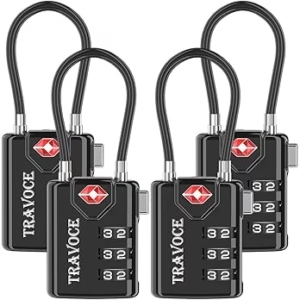Plug For Madagascar: What You Need To Know
What is the plug for Madagascar? Before you travel, check the information below to make sure your electronic devices are compatible with the outlet type and voltage.
Electrical Summary
Madagascar uses outlet types C, E at a voltage of 220V and a frequency of 50 Hz.
Plug Compatibility: Type C, Type E
Voltage: 220V
Frequency: 50 Hz
Type C

Type E

Can North Americans use Electronics in Madagascar without an Adapter?
No! North Americans will need an adapter for the outlets and a transformer for the voltage when traveling to Madagascar. North Americans device plugs will not work with the outlet types in Madagascar. Also, the voltage in Madagascar is different from North American voltages.
Can Europeans use Electronics in Madagascar without an adapter?
Yes! Europeans do not need a travel adapter or transformer when traveling to Madagascar. Most device plugs will work with the outlet types in Madagascar. Also, the voltage in Madagascar is the same as in Europe.
What Outlet does Madagascar Use?
Type C

Type C plug sockets have two round pins and no grounding pin. These plugs are typically used with devices that have a voltage of 230V.
Type E

Type E plug sockets have two round pins and a grounding pin. These plugs are typically used with devices that have a voltage of 230V.
Recommended Products:
Should I use a VPN when traveling?
YES! Using a VPN when traveling is highly recommended to protect your online privacy and security. Public Wi-Fi networks in hotels, airports, and cafés are often unsecured, making you vulnerable to hackers and data theft. A VPN encrypts your internet connection, safeguarding sensitive information like passwords and banking details. It also allows you to bypass geo-restrictions, granting access to streaming services and websites that may be blocked in certain countries. Additionally, a VPN helps prevent government surveillance and ISP tracking. For a seamless and secure browsing experience while traveling, choose a reliable VPN with fast speeds and strong encryption.
Madagascar Travel Essentials:
Is it safe to drink water in Madagascar?
To be on the safe side, you can use common precautions such as boiling tap water for at least one minute, using water purification tablets, or drinking bottled water. It’s also important to note that ice may be made from tap water and that foods may be washed or prepared with tap water.
We recommend always packing a filtered water bottle when traveling!
Travel Essentials
Be sure to check our list of travel essentials before your trip!
Should I get travel insurance when traveling to Madagascar?
It is generally recommended to get travel insurance when traveling to a different country. Travel insurance can provide financial protection and peace of mind in case of unexpected events, such as medical emergencies, trip cancellations, lost or stolen baggage, or other travel-related mishaps.
Travel insurance can cover various expenses related to your trip, such as medical expenses, emergency medical transportation, trip cancellation or interruption, lost or stolen baggage or personal belongings, and other travel-related expenses.
Before purchasing travel insurance, it’s important to carefully review the policy details, including the coverage limits, exclusions, and any applicable deductibles or copays. You should also make sure that the policy covers any activities or destinations that you plan to participate in or visit during your trip. Click here to price for Travel Insurance for Madagascar
Travel Summary
Visitors to Madagascar can explore the island’s diverse ecosystems, from lush rainforests to arid deserts, and encounter a variety of wildlife, including lemurs, chameleons, and colorful birds. Some of the most popular national parks and reserves for wildlife viewing include Andasibe-Mantadia National Park, Ranomafana National Park, and Isalo National Park.
In addition to its natural beauty, Madagascar also has a rich cultural heritage, with a blend of African, Asian, and European influences. Visitors can explore traditional villages and markets, sample local cuisine, and learn about the country’s history and customs.
Madagascar is also a great destination for outdoor activities, with opportunities for hiking, snorkeling, surfing, and more. The country’s beaches, such as those in Nosy Be and Ifaty, are popular for their clear waters and white sand.
Travelers to Madagascar should be aware of the potential risks of natural disasters such as cyclones and the need to protect the country’s fragile ecosystems. Visitors should also be respectful of local customs and traditions, such as dressing modestly when visiting traditional villages.
Overall, Madagascar offers a unique and unforgettable travel experience, with breathtaking landscapes, diverse wildlife, and rich culture. It is an ideal destination for those seeking an off-the-beaten-path adventure with a blend of nature and culture.
Traveling to another country? Check out our Countries page for more info on countries like Mauritius, Seychelles, Mozambique, Maldives





